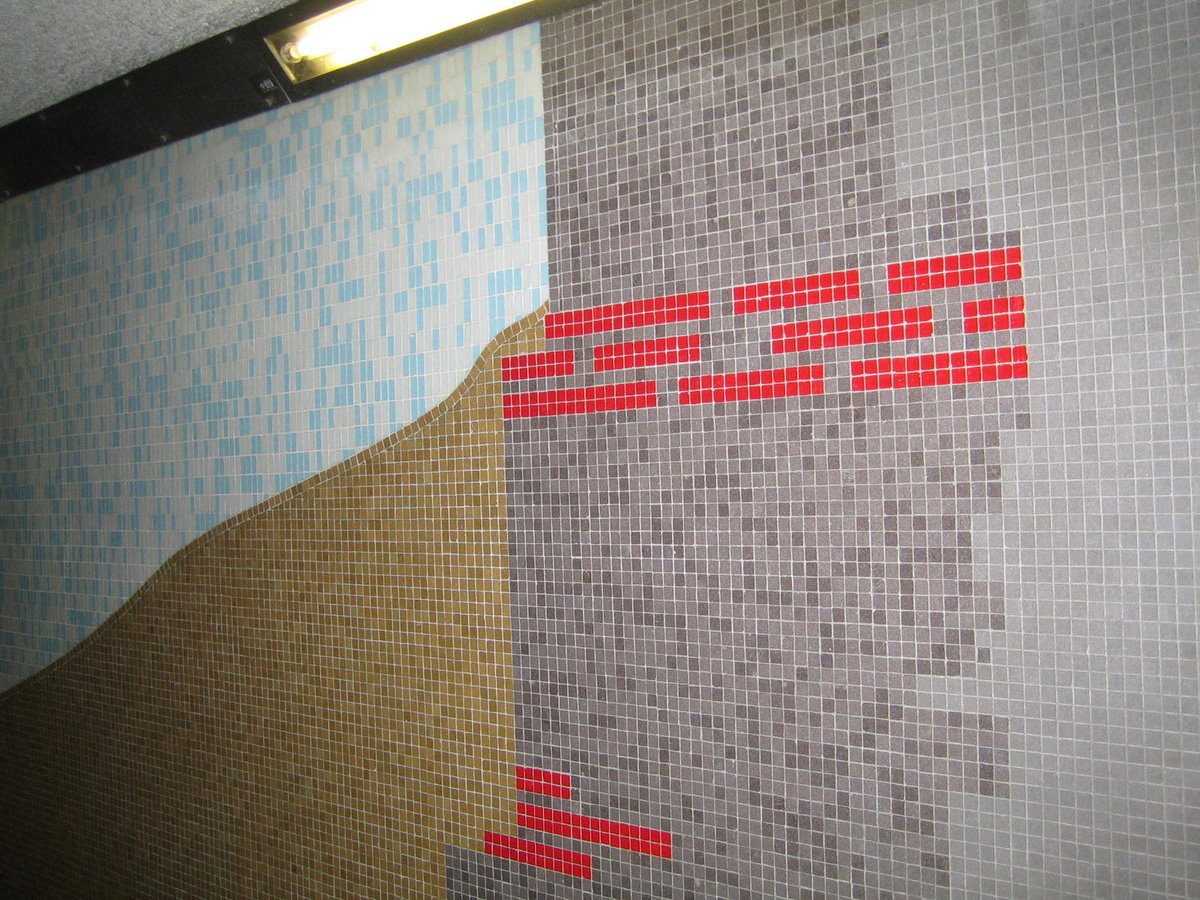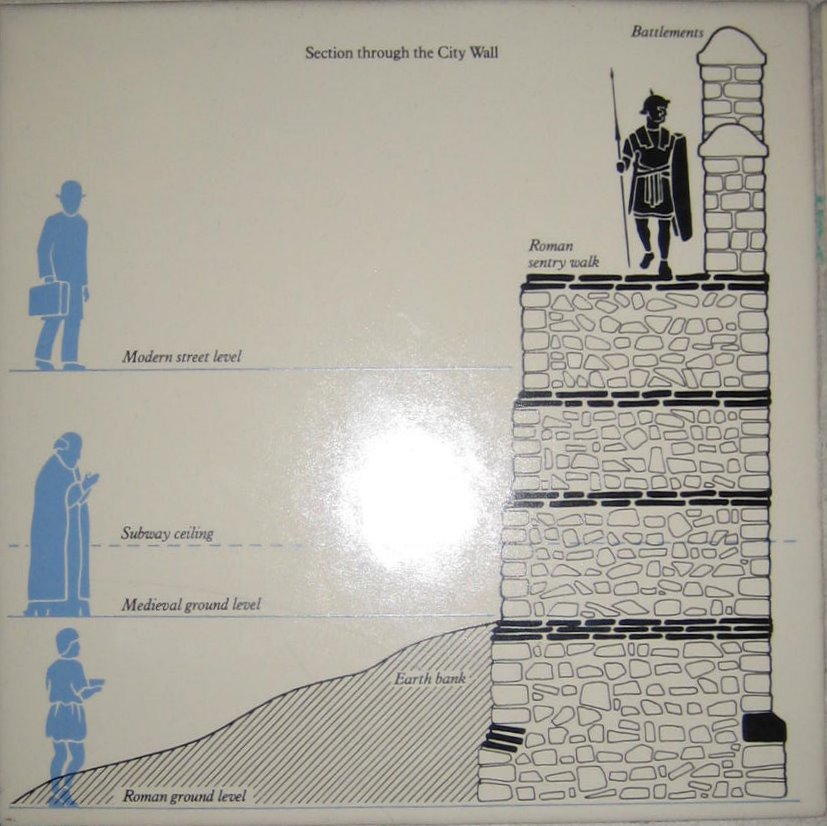The Abbey and The Synagogue
Visited 17 March 2006
Aldgate was once the
easternmost portal of London. Today it's a street 50 yards
long with only two, albeit substantial, buildings. In 1977,
subway excavations cut under the old Roman/medieval wall in this area
near where the Aldgate once stood. Just inside the old
Aldgate entrance once stood the Augustine Priory of Holy Trinity
Aldgate, founded by Queen eventually known as Matilda
in 1108. Matilda (or Maud nee Edith) was married to Henry
I, the youngest son of William the Conqueror and the first Norman King
fluent in the English language. A bureaucracy
builder, he ruled 35 years after stealing the throne from his
brother who was off on a Crusade. As a fourth son, he was
expected to become a bishop and so received a lot more education than
he needed to be king. (His nickname was Beauclerc,
which means scholar. He wasn't just
a scholar as he holds the record for most illegitimate progeny of an
English king, somewhere between 20 and 25.) While
her husband was fooling around, apparently Matilda had plenty of time
to establish monasteries. She had been raised in one herself
by her aunt/prioress, and there was some debate as to whether she could
marry Henry since she may have taken permanent vows as a nun.
The pope didn't want kings getting into even good habits.
Matilda was popular and her
followers unsuccessfully tried to petition for sainthood after her
death. While sainthood eluded her, she did establish the Holy
Trinity
Abbey and gave it three churches in the area plus the Aldgate
portal itself. Altogether, it was one of the largest medieval complexes
in London. Supposedly Matilda wanted to be buried
there, but her husband refused.
Besides being the first
religious house established
inside London under Norman rule, Holy Trinity had another first: it was
the first monastery to be dissolved by Henry
VIII. (The place owed him a lot of
money; typically kings taxed monasteries about 20%
and Holy Trinity was struggling financially during Tudor times.) After that it passed into the Duke of
Norfolk's possession
during Elizabeth I's reign. Even before the dissolution, parts of the
place were falling
apart. Subsequent centuries were even less
kind. Only two
fragments of the monastery survive above ground
today. One can be seen in the basement of the Towergate
building.
Below is a display in the
Aldgate tube station exit showing the Roman, monastery, and modern
street levels contrasted with the Roman wall:

The red markings in the ceramic tile in the exit
corridors of the Aldgate tube station correspond to the brickwork
depicted at right on plaque # 6.
The Roman ground level was 14 feet below modern street level.
By the abbey's heyday, it had already risen 7 feet from Roman times.
|
 |
Recent fact: The first
bomb to explode on the London Underground in the 7/7/05 terrorist attacks
was on the tube about to arrive at this station from Liverpool station
in Bishopgate (next page). Previously the station was damaged
by German bombs during WWII. Something there is that does not
love a subway exit.
Besides containing the
remains of the first monastery in Norman London, this area has another
famous religious structure, this one still standing. For a
century, Aldgate was London's Jewish area starting in 1181 and lasting
until Edward
I first exorbitantly taxed, then executed many, and finally
expelled the rest of them in 1290. Oliver
Cromwell, who attributed some of Holland's success to Jewish
contributions and thought they would help England recover from its Civil
Wars, welcomed them back 365 years later. (By then,
many of them were secretly already there, having been driven out of
Spain during the Inquisition.
They pretended to be Christians
to escape further problems. (American congressmen seem to
have adopted that trick as well.) By Cromwell's day, England was the
only European country without Jews. He allowed Spanish and
Portuguese Jews to migrate back to this neighborhood, building Bevis
Marks synagogue
in 1698. That building, completed in 1702, is the only
synagogue in Europe to remain continuously functioning for 300 years,
despite a burnt roof in the 18th century and some damage by an IRA bomb
in 1993. (View a picture of its interior by clicking here.)
Behind the synagogue runs Houndsditch
road on the site of the moat the Romans built around their
walls. In fact, Londoners kept re-digging this ditch as
inhabitants kept filling it up with garbage, including dogs -- hence
its name. During the great plague
when 7000 people a week were dying in London, mass burial pits were dug
alongside it near Bishopgate (where we travel next). During
the 1665 plague, Londoners intentionally killed dogs
and cats whom, they thought, were spreading the plague. This
took away the natural predators of the city's rats whose fleas, of
course, were the true spreaders. The plague took 20% of
London's population until the Great Fire of 1666 eliminated
most of the rats. Was the cure worse than the disease?
For an index of all of our London
pictures, click here
Created on 14 November 2006

This work is licensed under a Creative
Commons Attribution-NonCommercial-NoDerivs 2.5 License.